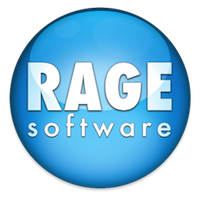Now that you have your blog set up with lots of great content related to your company, you can promote your blog using both Blog Search Engines and Blog Networks to get more exposure and drive more readers.
Blog Search Engines
Much like the Google search engine which searches the entire web, there are many search engines related purely to online blogs. That is, they will only search blog posts. With the rising popularity of blogs and blog search engines, leveraging these resources can offer a large amount of targeted web visitors to your web site’s blog. Some of the biggest blog search engines include;
Getting your blog listed in Technorati can help provide extra exposure and important stats including how many other blogs are linking to your blog and your Blog Authority which, like Google’s PageRank, is measured by how many quality blogs link back to yours.
Once you have set up your online blog it is extremely important to set up your Technorati profile. Then, add your online blog to your profile and you can start tracking your blog’s popularity. As you add posts to your blog, they can appear on Technorati’s web site if you follow the notification descriptions below.
Blog Networks
On step above blog search engines are blog networks. Blog networks usually focus on a particular subject and allow only high quality, related blogs, to join their networks. They may be community driven, in that you must submit your blog to the network and other may vote on its relevance, or there may be a panel of judges that will determine whether or not your blog meets the standards of the network.
One of the more popular, and exclusive blog networks is 9rules (Update 2019: Link no longer available). A few times a year 9rules will open their network to submissions by bloggers, providing an opportunity for them to have their blog evaluated, and possibly included in their network.
Interested visitors will often visit blog networks in search of content related to their interests. In turn, this helps push new traffic to your web site. Other members of your same blog network may also discover your blog and provide links back to your web site. Blog networks are a great way to build your blog’s brand recognition, create a perception of quality and increase traffic and blog exposure.
There are many blog networks around and reading other blogs in your industry, or doing a simple Google search will return the vast amounts of opportunities available to you. Some of the more popular blog networks include;
b5media (Update 2019: Link no longer available)
Smash.vc
Web2.0 Workgroup
For a long listing, and ranking scheme of the most influential blog networks, see The Blog Network List (Update: website no longer exists).
Automatically Notifying Blog Search Engines About Updates
The great thing about blogs is the ability to automatically let blog search engines, such as Technorati, know when you have posted a new blog article. This can happen instantly without you having to do anything but write your blog post and submit it to your web site. Technorati provides step by step instructions on how to PING (a fancy word for notify), their search engine when you write a new blog post. You can read the step by step instructions on the Technorati help pages (Update 2019: Link no longer works).
You can use Google’s Blog submission (Update 2019: link no longer available) service to submit your blog to Google’s Blog Search Engine. This works similar to the Technorati’s notification features described above.

